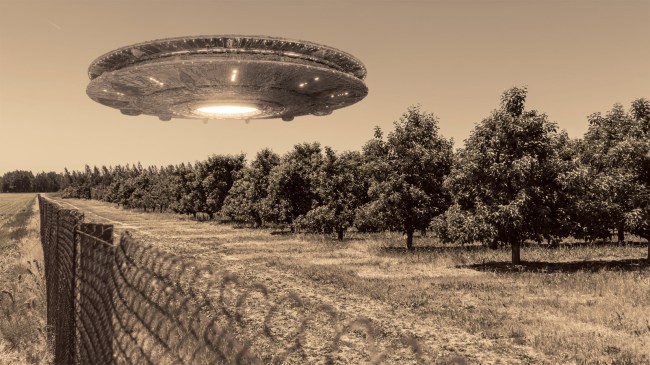iStockphoto
Scientists believe they have discovered what the “foo fighter” UFOs actually were that sparked alien fears among pilots during World War 2.
The U.S. 415th Night Fighter Squadron was the first to describe a UFO as a foo fighter during the war and the term would go on to be used throughout the conflict.
In the January 15, 1945 edition of Time, numerous United States Air Force pilots reported “balls of fire” that they called foo fighters following them closely at high speed during the night for over a month.
Now, scientists at the University of California, the University of Arizona and and Harvard-Smithsonian believe they have finally figured out what these foo fighters actually were: plasmas in the thermosphere.
“These plasmas are electromagnetic entities that have a variety of shapes and sizes. They have repeatedly approached spacecraft and the space shuttles and are attracted to electromagnetic activity including thunderstorms,” said co-author of the study, Dr. Rudolph Schild, of the Center for Astrophysics, Harvard-Smithsonian.
“They have been filmed from space, descending into the lower atmosphere and appear to be attracted to airplanes, fighter jets, nuclear power plants, and ‘hot spots’ of radiation, such as Hiroshima, which was destroyed by an atomic bomb.
“Based on video, photographic and computerized analysis, including reports by military officers and astronauts, we believe these plasmas account for at least some of the numerous reports of UFOs and Unidentified Aerial Phenomenon over the last several thousand years including the ‘foo fighters’ observed by German, Japanese and Allied pilots during WWII.”
Plasmas are what causes lightning and the Northern Lights.
According to the Telegraph, Plasma-like entities “have numerous shapes, travel in different directions, with some moving quickly while others hover in place. They even appear to target or follow each other and sometimes collide, leaving what resembles a plasma-dust trail in their wake.”
Study co-author, Dr. Christopher Impey of the department of astronomy at the University of Arizona, said, “This does not mean these plasmas are alive, or engaging in intelligent purposeful behavior.”
However, some scientists believe plasmas may represent an alternate form of life that is not carbon-based.
The research team next hopes to launch satellites that generate electromagnetic pulses equipped with infrared and X-ray cameras so they can more closely study plasmas.

